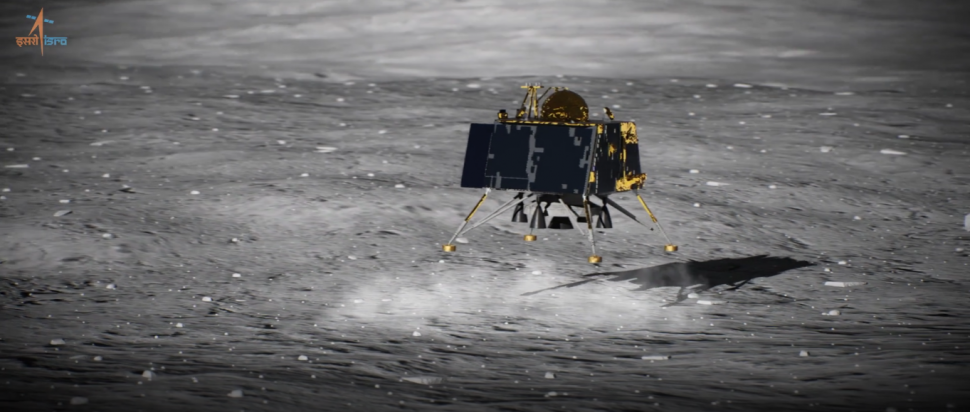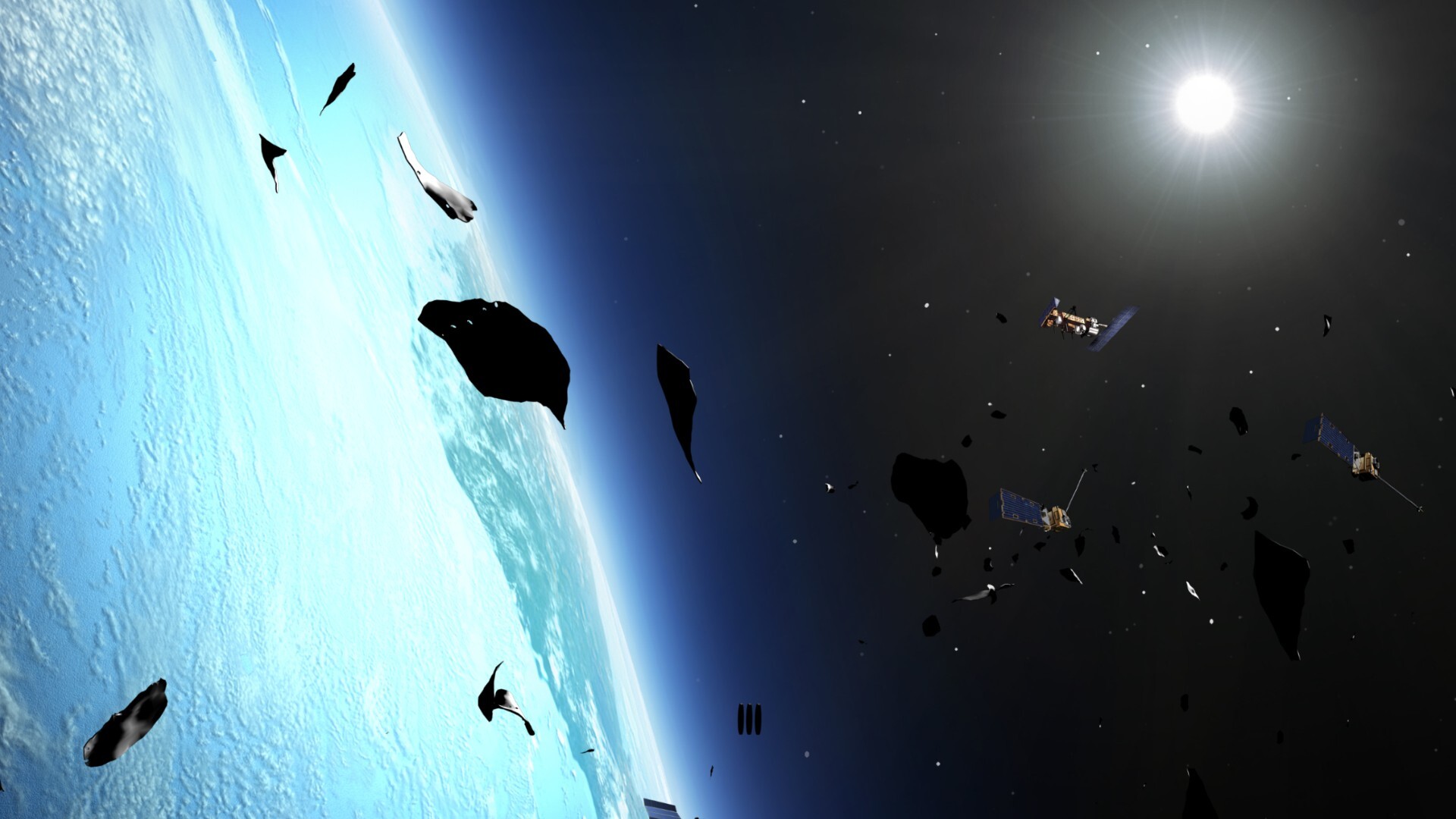Time Is Running Out for India to Save Its Silent Moon Lander
Good night, moon.

Even as its orbiter settles into work, India's hopes of resurrecting its moon lander are quickly evaporating as the country marks two weeks from its attempt to softly touch down on the lunar surface.
The Chandrayaan-2 mission's lander, Vikram, began its descent near the south pole of the moon on Sept. 6. For many minutes, everything seemed to go smoothly. At mission control for India's Space Research Organization (ISRO), which runs the project, the numbers on screens displaying the spacecraft's altitude and speed ticked downward as planned during the livestreamed procedure.
Then, the numbers froze and the room fell silent. It was a brief foreshadowing of the two weeks of silence that have followed as ISRO attempted to make contact with the Vikram lander. Since initial statements about anomalies during the landing, ISRO has been nearly as silent. As of this morning (Sept. 19), the sun is setting over Vikram's planned landing site, marking the end of reasonable hopes of reviving the robot.
Video: Watch the Moment When India's Moon Probe Went Silent
Related: India's Chandrayaan-2 Moon Mission in Photos
Thank you for standing by us. We will continue to keep going forward — propelled by the hopes and dreams of Indians across the world! pic.twitter.com/vPgEWcwvIaSeptember 17, 2019
"Vikram lander has been located by the orbiter of Chandrayaan-2, but no communication with it yet," said an ISRO statement released on Sept. 10. "All possible efforts are being made to establish communication with lander." Indian media reports at the time suggested that the lander appeared to be in one piece, although ISRO did not release any images taken by the orbiter.
A tweet published Sept. 17 alluded to the lander's situation but did not provide any further details. "Thank you for standing by us. We will continue to keep going forward — propelled by the hopes and dreams of Indians across the world!"
Today, ISRO added another statement about the Chandrayaan-2 mission overall, noting that the orbiter's payloads are working and have completed their initial tests successfully. "Orbiter continues to perform scheduled science experiments to complete satisfaction," ISRO wrote.
Breaking space news, the latest updates on rocket launches, skywatching events and more!
But the new statement still offered no details about Vikram. "National level committee consisting of academicians and ISRO experts are analyzing the cause of communication loss with lander," read the only bullet dedicated to the lander. Although the lander carried batteries in addition to solar panels, it isn't clear how long those batteries could last.
NASA's Lunar Reconnaissance Orbiter flew over the landing site on Sept. 17, but early reports suggest the area was already too dark to successfully photograph the lander. Earlier this year, LRO successfully imaged another lunar lander, Israel's Beresheet, 11 days after it crashed into the moon's surface.
Vikram's career was always going to be brief: one lunar day, or two terrestrial weeks. The lander wasn't designed to withstand the frigid lunar night, although the ISRO team had intended to attempt to wake the spacecraft when the sun rose over it again, just in case they got lucky. But without ever having managed to establish contact in the first place, ISRO's odds of awakening Vikram in early October, when the sun rises again, are nearly nonexistent.
Despite the lander's silence, the Chandrayaan-2 mission itself is far from over. The orbiter is meant to last for one year, gathering science observations from an orbit that loops over the moon's poles.
- India's Chandrayaan-2 Spacecraft Snaps Its First Picture of the Moon
- Amazing Moon Photos from NASA's Lunar Reconnaissance Orbiter
- Stunning Photos Show Earth from India's Spacecraft Headed to the Moon
Email Meghan Bartels at mbartels@space.com or follow her @meghanbartels. Follow us on Twitter @Spacedotcom and on Facebook.

Meghan is a senior writer at Space.com and has more than five years' experience as a science journalist based in New York City. She joined Space.com in July 2018, with previous writing published in outlets including Newsweek and Audubon. Meghan earned an MA in science journalism from New York University and a BA in classics from Georgetown University, and in her free time she enjoys reading and visiting museums. Follow her on Twitter at @meghanbartels.
